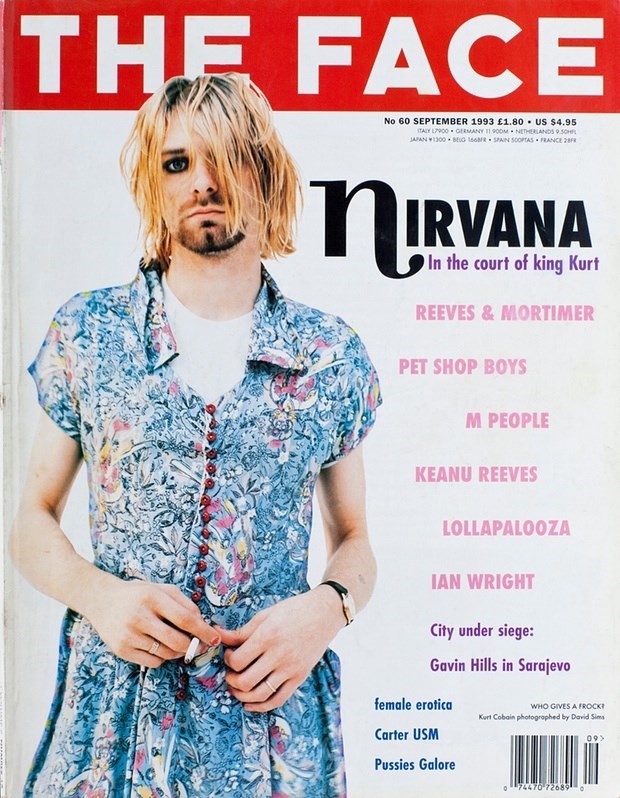Apparel Meets Fluidity: How Labels Are Blurring the Lines of Gendered Fashion
Jaden Smith donning a Louis Vuitton skirt. Ruby Rose's androgynous sense of fashion. Erika Linder and her defying bookings for male modeling gigs from Tom Ford to Louis Vuitton. The fashion world is a much more accepting and creative avenue into the discussion of gender fluidity and its impact on equality of the sexes. The move to accept more ambiguous styles and unisex clothing as more of a norm in a line of work that has struggled in the past with accepting diverse models and body types is revolutionary.
The upside of genderless fashion derived much of its taste from decades past. During the 1950s, London experienced a Teddy Boy explosion where the younger generation favored Edwardian-inspired silhouettes such as tailored suits and slicked back quiff hairdos. A truly eccentric style that rejects the post-war greyscale drabness, it was a beginning of a questioning of traditional expectations. Fashion icon Yves Saint Laurent created Le Smoking - the first women's tuxedo in August 1966, a rebellious turnover for a traditional representation of male dominance and power towards giving agency to the female. Le Smoking became so influential that the brand ensured that some version of it was included in every subsequent fashion collection, continuing up to present day with the YSL’s current head designer Stefano Pilati. The power of the jumpsuit has been an influential wardrobe staple for both men and women for decades - from Katharine Hepburn in her 1937 film "Stage Door" to Elvis's iconic white suit. Even Kurt Cobain, a '90s music legend for individualism and non-conformity, consistently has shown himself in favor for wearing whatever the hell he pleases. Babydoll dresses and women's underwear were a norm for him, a telling sign of grunge fashions embracing of androgyny.
The clash of men's and women's collections into a singular unisex apparel reflect a progressive generation interested in questioning cemented gender norms and expectations. After the administration at ISCA Academy in Exeter refused to modify their students' uniforms in response to the hot weather, the male students held a protest in wearing skirts to bring awareness to the need to create more options for uniforms. Pop duo Tegan and Sara collaborate with Wildgang - a company dedicated towards dissolving traditional male fashion constructs and encouraging female tomboy attire - to create their "The Future is Fluid" line. The line features slogan tees, hoodies, jackets and pins focused on promoting gender fluidity, with 100% of the proceeds going to their organization The Tegan and Sara Foundation that works toward equal representation for LGBTQ women. More and more, we see an acceptance of expanding upon innovative new styles and broadening perspectives on what any individual can wear to fully express themselves.
Major fashion powerhouses showcased this new age of fluidity on the runway and campaigns. Three years into his tenure as creative director of Gucci, Alessandro Michele started to mesh women's and men's collections together on the runway as well as creating more gender ambiguous looks. His cross-pollination between fashion and gender and free-thinking attitude sparked a discussion on fashion conventions and Gucci's profits soared. Zara launched a 16-piece collection of unisex items named "Ungendered", which their models showcased in their campaign. ASOS teamed up with GLAAD towards a collection of gender-neutral clothes as part of GLAAD's "Together" campaign. LGBTQ advocates, including "13 Reasons Why" star Tommy Dorfman, teamed up with the brands to model the lines with 100% of the proceeds going towards GLAAD.
Gender-neutrality in fashion helps in the development of identity for children. John Lewis became the first major UK store to remove gendered labels from children's clothing to remove gender stereotypes that often begin at birth. The new labels say “Girls & Boys” or “Boys & Girls” and will be put on garments from newborns until age 14, as well as gendered signs removed from the department store’s childrenswear sections. Initiatives like John Lewis' are supportive of open-minded expression of gender, with psychologist Dr. Christina Richards claiming this "allow[s] children to express themselves fully and be all they can be - irrespective of sex.” However, gender therapist Dr Christella Antoni, stresses the importance of not replacing one with the other. Antoni discusses the importance of more gender-neutral clothing, but not at the expense of losing traditional female and male attire. In an ideal world, gender-neutral clothing should co-exist with clothes for girls and boys in order to give children to opportunity to choose what they want to wear and not become confined by their options.
It is important, however, that the gender fluidity movement in fashion does not just turn into a fading trend or a failed attempt to help accept gender ambiguity. Some critics of the movement acknowledged the collections at times can be slightly misogynistic, with baggy clothing and neutral colors as the dominant designs (traditionally male styles) as opposed to celebrating femininity in its gender neutrality. Male models do not always push the envelope when it comes to questioning masculine styles, and this in response makes some fear companies that launch unisex campaigns may be doing it to profit off of a trending social issue without doing anything productive to the movement. The gender blur is an intricate transition and deconstruction of constructs spanning generations, a movement that has to be delicate in its impact on gender-blending and fluidity as a whole.
Click for media sources: Jaden Smith, Kurt Cobain, Teagan and Sara x Wildfang, Tommy Dorfman, John Lewis
Featured image via










